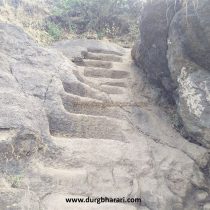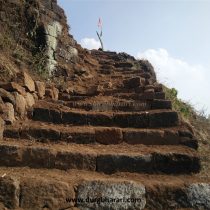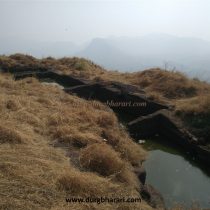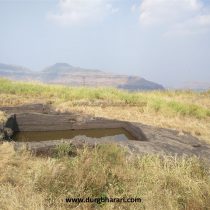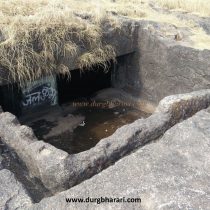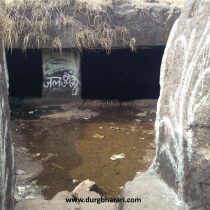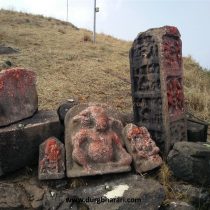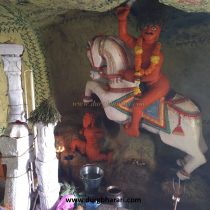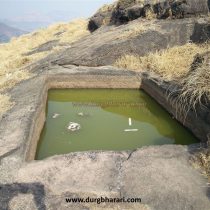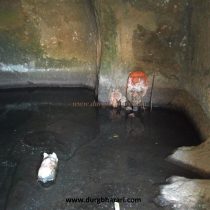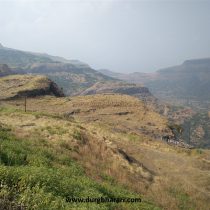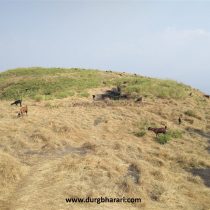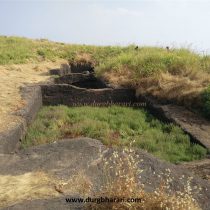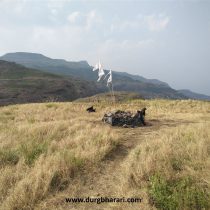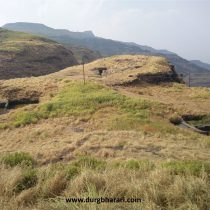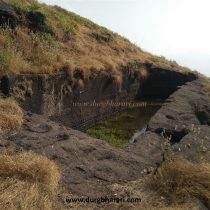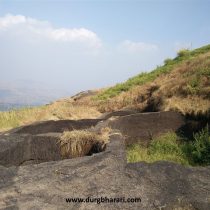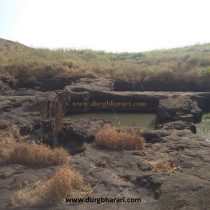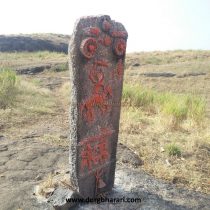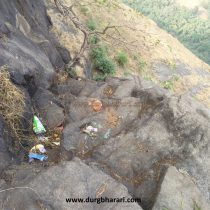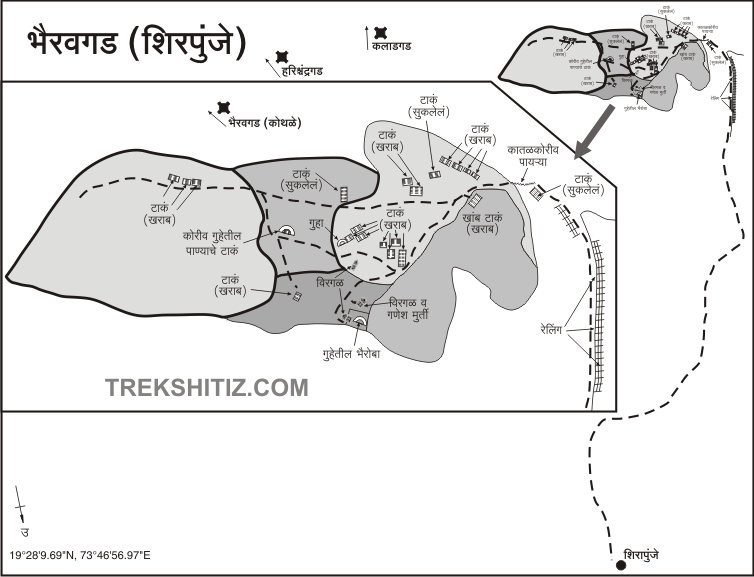BHAIRAVGAD-SHIRPUNJE
TYPE : HILL FORT
DISTRICT : AHMEDNAGAR
HEIGHT : 4035 FEET
GRADE : MEDIUM
Harishchandragad fort in Akole Taluka of Ahmednagar district is a favorite fort of trekkers. Kunjargad (Kombadgad), Bhairavgad (Kothale), Kaladgad, Bhairavgad (Shirpunje) forts were built in ancient times to keep an eye on the various routes leading to Harishchandragad and its region. Out of these four forts, Bhairavgad fort was built between the villages of Shirpunje and Kumshet on the way to Harishchandragad via Rajur to keep an eye on the Mula river valley. Bhairoba on Bhairavgad is the deity of the local people and here this fort is known as Bhairobagad. Every year around October, there is a pilgrimage to Bhairoba. The path leading to Bhairoba temple on the fort is visible as it is frequented visited by local villagers. Bhairobagad, Kalsubai, and Harishchandragad are in the sanctuary area and devotees are coming to the fort, the forest department has installed iron railings in dangerous places.
...
Bhairavgad is to the south of Harishchandragad and considering the overall structure of the fort, this fort must be built with Harishchandragad. To visit Bhairavgad, one has to travel from Mumbai via Malshej Ghat to Otur-Bamanwada-Kotul-Kothale-Lavhali-Ambit or via Mumbai-Ghoti-Bhandardara via Rajur-Manikozhar-Khadki-Ambit to Shirpunje village. After crossing the bridge over the river before Shirpunje village, one can see a road on the left. There is also a sign saying Kalsubai Harishchandra Sanctuary and this road goes to the foothills of Bhairavgad. Since there is no public transport facility in this area, if you have your vehicle, you can go directly to the base of the fort. From here you can see Bhairoba cave in the middle of Bhairavgad, hoisted flags can be seen outside the cave as well as over the cave. Adjacent to the parking lot is a cement shelter built by the forest department and in front is an iron arch inscribed as Shri Kshetra Bhairavnath Devasthan, Shirpunje. From this arch, after climbing some steep steps and climbing serpentine for an hour, we come to the iron railings constructed by the forest department. After crossing these walls, you come to a gorge between Bhairavgad and the neighboring Ghanchakkar hills. After reaching this gorge, Ambit village can be seen from here. You can also take a path from Ambit village and come to this gorge. At the top of the gorge is a ruined cistern and steep steps are carved in a circular pattern. Climb these steps and enter the fort through the ruined entrance facing north. Only the base of the bastion next to this gate remains and some remnants of the ramparts can be seen on the ridge. The height of Bhairavgad is about 3500 feet above sea level and it is spread over an area of about 7 acres from east to west. Upon entering the fort, on the right side, there are 4 joint cisterns carved in the rock, and next to it is another dry cistern. Seeing this cistern, you should not go forward but turn back and start walking towards the fort from the left. There is another joint cistern on this side and the road leading to the fort is visible from here. Seeing this, there is a big pillared cistern on the left side. The design of this cistern is worth to see. Currently, this cistern is named Jalkumbh. The road leading to this pillared cistern is also made out of rock and a cave is carved in the rock in front of the tank. The roof of the cave is covered and ditches are dug on all four sides of the cistern to harvest rainwater. This cave feels cool even in summer when the temperature is high. A big round pothole is carved on the side of the cistern and there are many natural potholes on the top of the cistern. On the way to Bhairoba's cave, you can see a group of 4 cisterns carved in the rock on the right side and a group of 5 cisterns on the upper side. On the path to the right of Bhairoba's cave is a recently carved four and a half foot-high hero stone. Next to the top of the cave, on the left side, there is a square-shaped tall hero stone. Further down the steps carved in the rock and going to the cave of Bhairav near the cliff, another hero stone can be seen outside. The cave has two halls, one with a five-foot-tall equestrian statue of Bhairoba and some carved stone pillars, while the adjoining hall has enough space for ten people. The cave has a fireplace to cook food and some utensils are also kept so that the people who come for the trek can make meals and stay there. The entrance to the cave is lined with iron bars and a gate on one side. There are steps carved into the rock to get down from there although they are broken up to some extent. Below this step is a cave measuring 10x12 feet. From here, Shirpunje village and the surrounding area can be seen. In front of the cave is the head of the fort at a slightly tall height. As we start walking towards the top of the fort on the left side in front of the cave, we could see a big cistern carved into the rock. Seeing this cistern, we should go to the top of the group of 5 cisterns we saw earlier. There is a large cave with two pillars carved in the rock. The cave has two doors and an arch carved on one of the large doors. As water has accumulated in this cave, it looks more like a water cistern. After seeing this cave, we reach the top of the fort in 5 minutes. There are 3 water cisterns carved in the rock and the remains of a large mansion. If you look around from the top of the fort, you can see a very large area like Kalsubai, Harishchandragad, Kaladgad, Kunjargad, and Naneghat. While descending the fort, you should descend in the direction of the entrance rather than descending from the path you came up from. While descending in the direction of the main entrance you can see two long water cisterns. After visiting this cistern and returning to the entrance, your fort round is complete. The entire fort round takes an hour. Looking at the remains and water cisterns on the fort, it should have a large population previously. There are 23 water cisterns on the fort, although only two cisterns have potable water. The beauty of Bhairavgad should be experienced at least once. Even if Bhairavgad is mentioned in history, it is difficult to refer to it as Bhairavgad is the name of many forts.
© Suresh Nimbalkar

